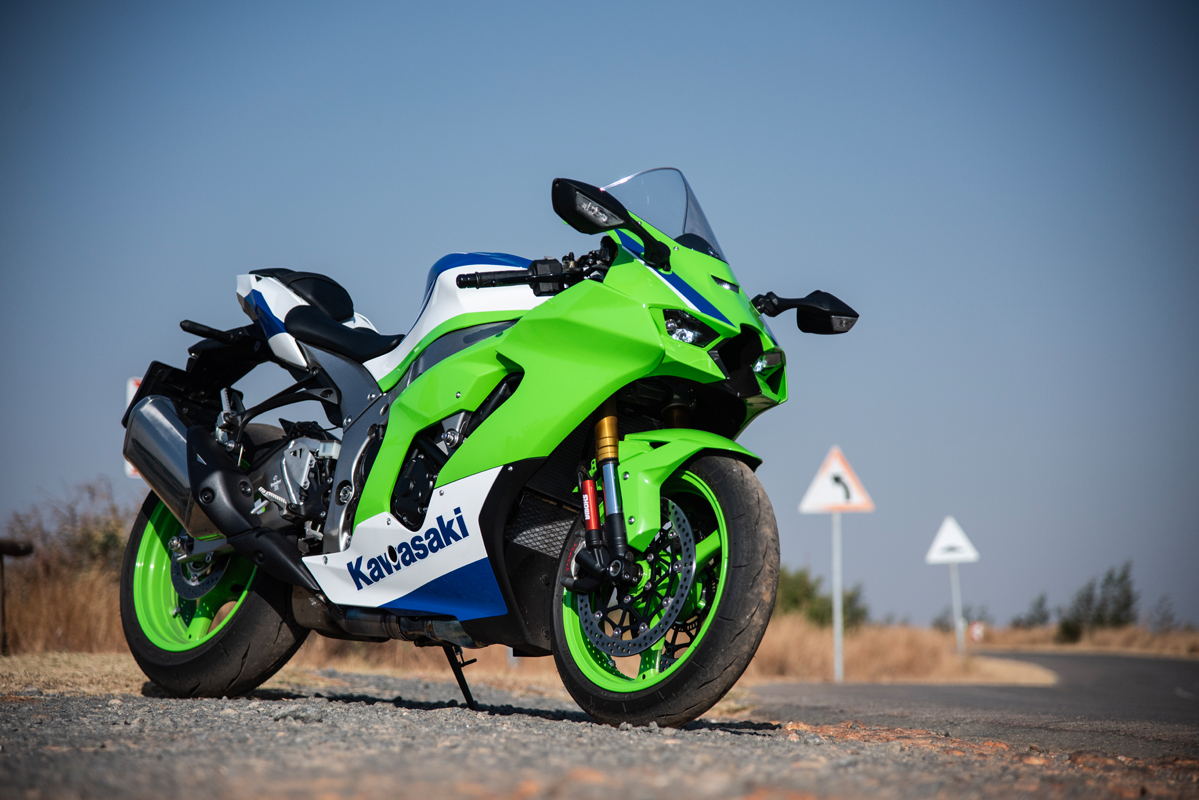
Kawasaki’s premier Superbike was perhaps overdue for a makeover to bring it up to spec with the competition. What better way to do it than by harking back to illustrious Kawasaki Superbikes from the 1980s? the ZX-7RR won 12 AMA Superbike championships in the hands of Eric Bostrom, Doug Chandler and Scott Russell. The lime green, pearl crystal white and blue colour scheme of the anniversary model pays homage to those racing Kawi’s of that era. The aggressive styling, with its integrated winglets to aid high-speed stability and downforce leaves you in no doubt of this ZX-10’s intentions. This bike unashamedly worships at the altar of speed.
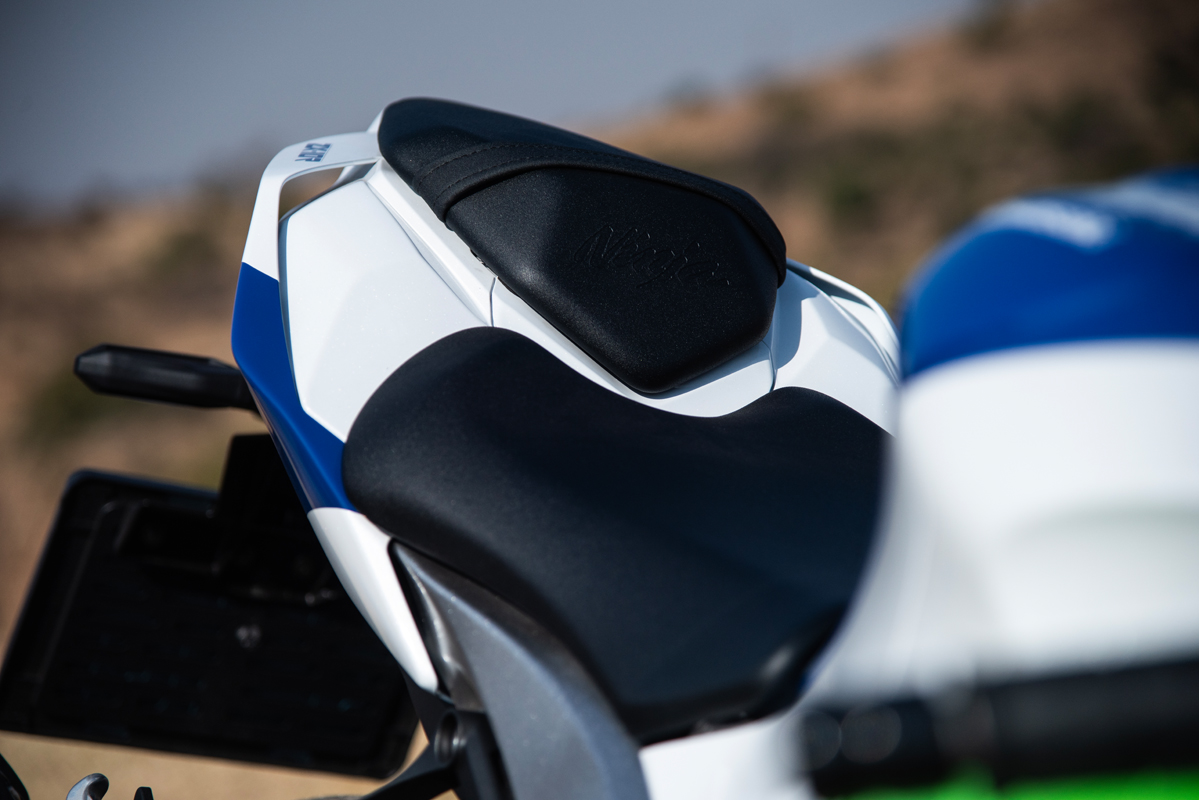
Johnny Rea dominated WSBK on his ZX-10 for a record 6 years in a row. Whilst there is very little in common between a full-attack World Superbike and the road-going model on which it is based, they do share vital DNA. The Anniversary Edition is testimony to that. Its purpose is to perform as a track weapon, at which it excels, albeit at the cost of road comfort. The handlebars are 10 mm further forward and the footpegs 10 mm higher, making a race crouch natural and anything else a bit painful. Remember the altar of speed…
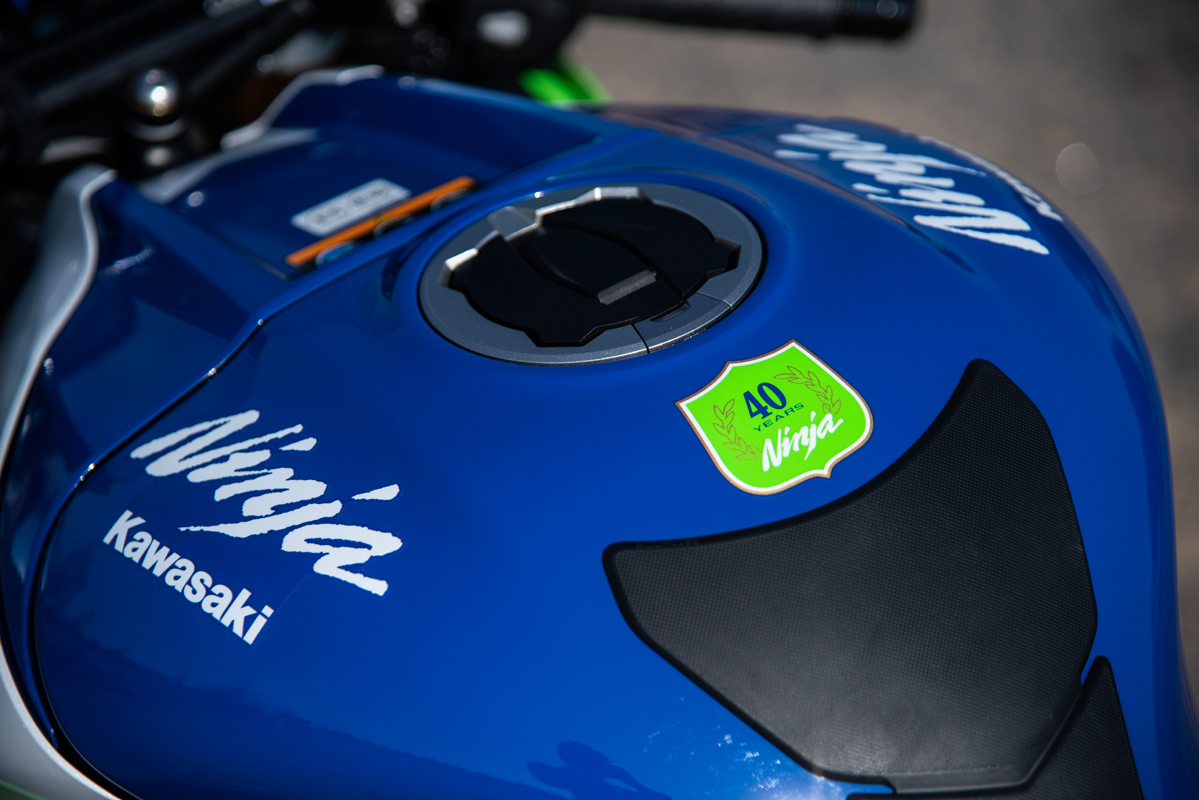
The ZX-10 has a magnificent motor. It is docile, almost 600-like, up until 6,000 rpm after which all hell, or should that be heaven, breaks loose. The soft low-down power allows the bike to amble around town with ease. When it starts revving it’s another story. The fuelling is precise to the point of being abrupt. This is a consequence of making the bike emissions compliant and afflicts all sports weapons. At highway speed, the ZX-10 feels like a pitbull on a leash. It just gives you the feeling that you need to get a hurry up and cater to its reason for being. This urgency hypes you up and only starts to abate way north of 160 km/h. Obviously, this has serious potential consequences for the traffic constabulary. This got me thinking, as someone who has lived through the evolution of Superbikes, on a slightly different tack.
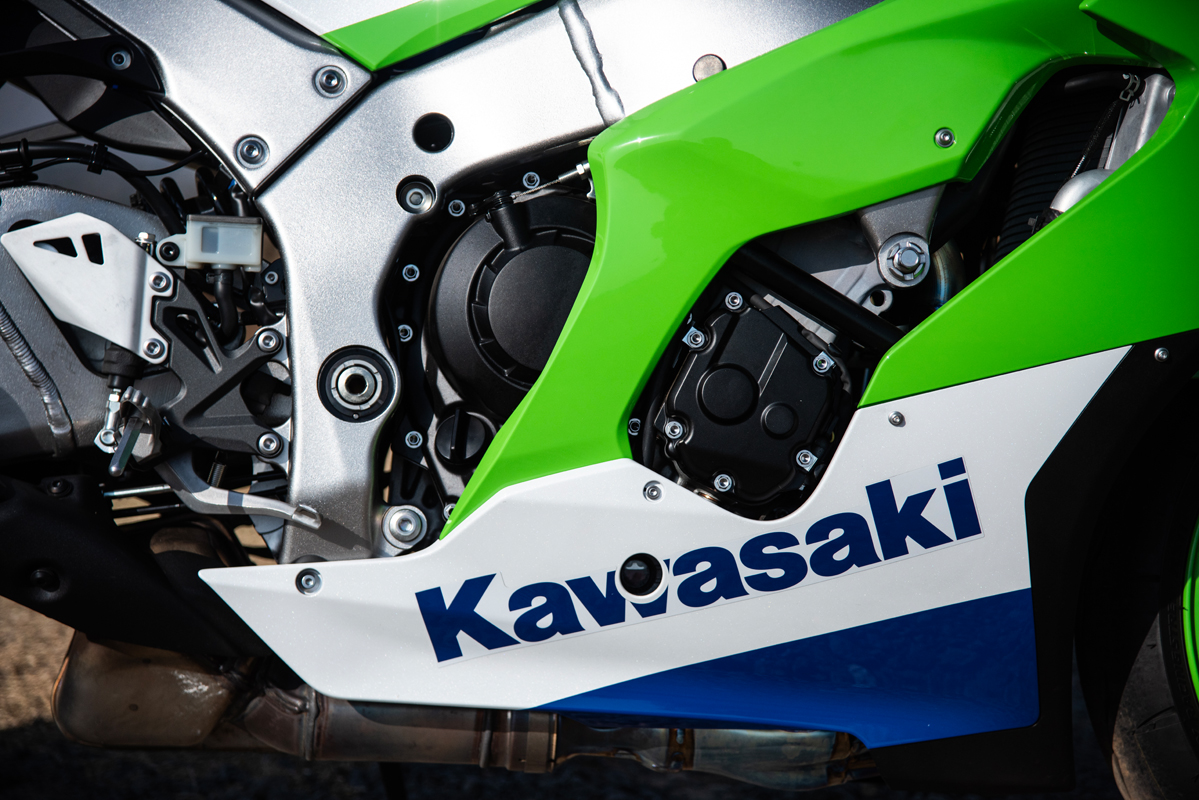
There is a saying that “we should consider carefully what we hope for ‘cause we may just get it”. This may just be the case with modern superbikes. Back in the ‘70s Superbikes were highly modified versions of the sports motorcycles of the day. Honda CB750 F, Kawasaki Z1 900, BMW R90 S, Moto Guzzi Le Mans, and Ducati 750 SS. By today’s standards, these were relaxed, easy-going motorcycles that could easily do duty as an everyday ride. The possible exception may be the Ducati. As Superbikes evolved, they became more dedicated to high-speed riding with a degree of comfort. The best examples of this are the Kawasaki Ninja 900, Honda VF750 F and perhaps the Yamaha FZ750. Fairings made maintaining high speeds easy. We demanded more and more performance and trackworthiness, and they kept on giving it to us.
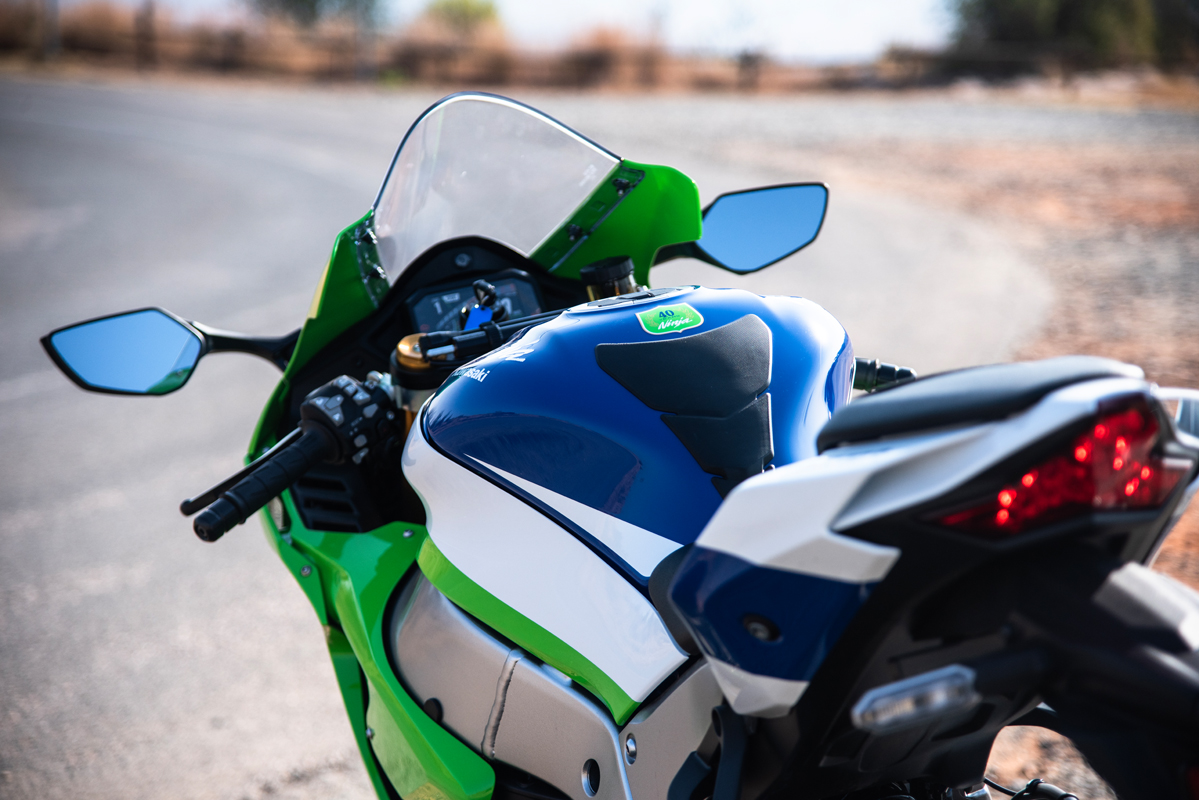
At some stage, we crossed the Rubicon and what won on Saturday seemed to be what sold on Monday. Factories pulled out all the stops and what resulted was the race replicas that we have today. They are all way too dedicated to track performance to be even vaguely suitable for extended road use, by virtue of their poor levels of rider comfort as well as their phenomenal performance. The Sports Tourers of today are more like the Superbikes from the past. Roads have endured a huge increase in traffic volumes, resulting in road degradation. Both these issues have put another spanner in the Superbike works. Consequently, sales have dwindled, and they are now the preserve of the really hardcore rider who will endure anything as long as all-round performance is not compromised. The technology that makes them work so well also means that this otherworldly performance comes at a hefty price.
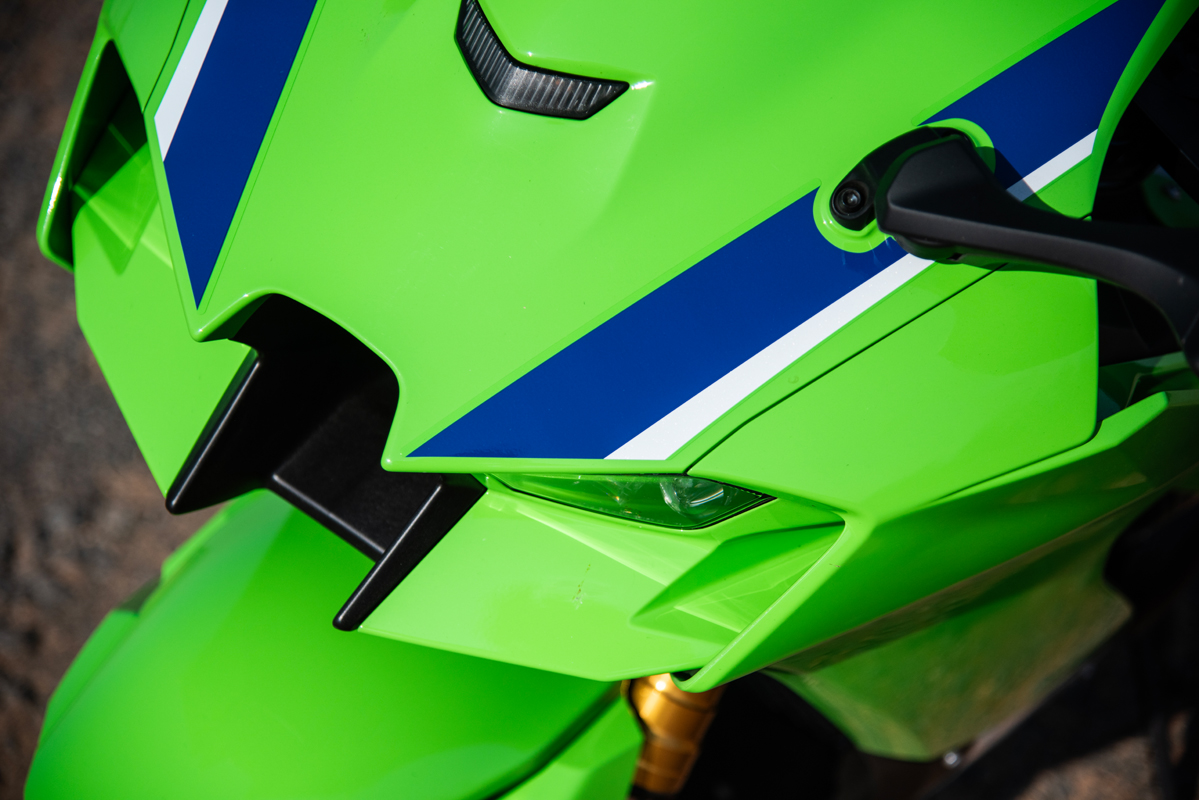
Having said all of that, Superbikes stir the blood in a way that nothing else can. They are not just fast; they are supremely fast! Up to 300 km/h they will humble damn near anything on wheels. Being exposed to the elements and fighting all the forces that extreme acceleration, speed and cornering inflict on the body makes for an experience like no other. The ZX-10 is no exception. Despite slightly shorter gearing it still runs to 150 km/h in first gear. Changing up does nothing to impede your progress. If anything, the beast seems to pull even harder. You lean forward to put weight on the front wheel which skims the tarmac, the electronic Ohlins steering damper helping to keep things tidy. Accompanying the rapid acceleration is an eerie howl from the airbox and a shriek from the exhaust that gets the blood pumping in a way that is difficult to explain adequately.
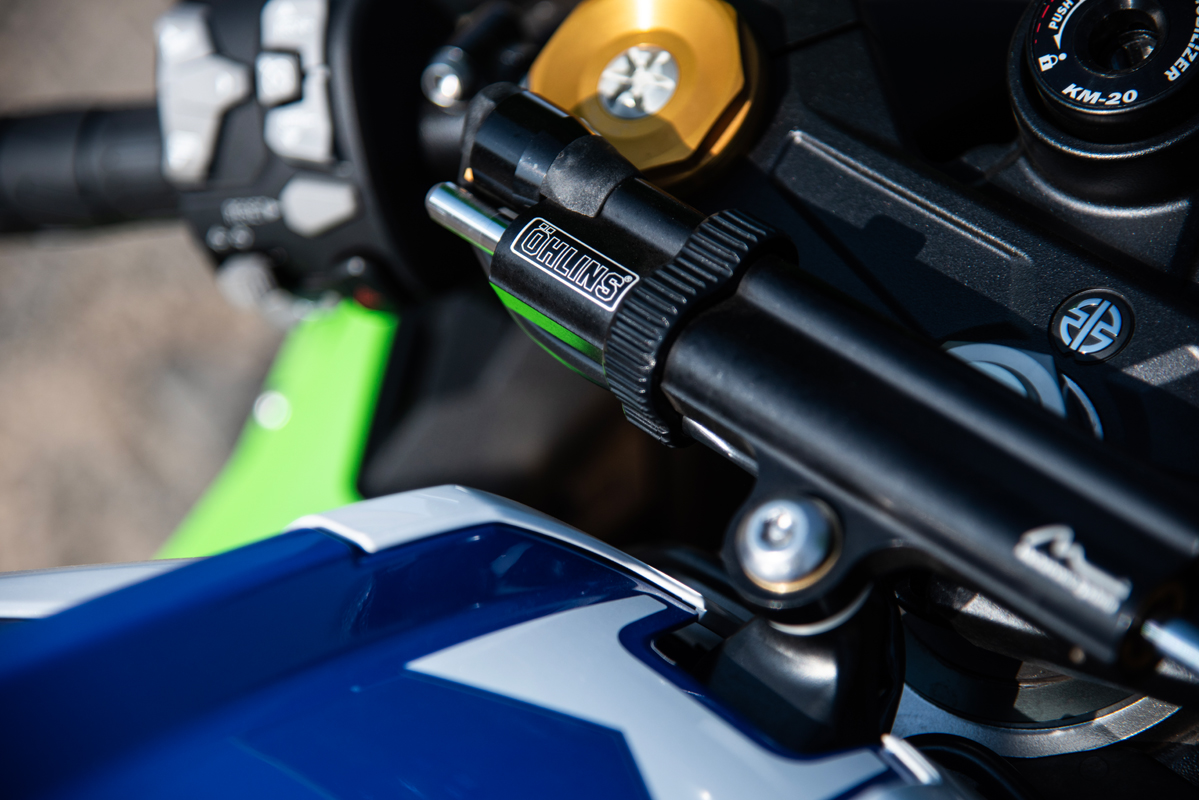
The motor is a gem. North of 6,000 rpm it generates massive power, pumping out 200 hp @13,200 rpm and 114,9 Nm of torque @13,500 rpm. All of this power feeds through a 190/55×17 back tyre and propels 206 kg of motorcycle towards the horizon. Wear on the 120/70×17 front tyre only happens when you get on the brakes. The 330 mm dual front discs, arrested by M50 Brembo monobloc 4-piston callipers and assisted by the 220 mm rear disc and single pot calliper generate immense stopping power with brilliant feedback. Kawasaki’s Intelligent Anti-Lock Braking System subtly helps to give you confidence as the Kawi scrubs off speed at an amazing rate. This is no one-trick pony. It is a totally engineered high-performance package which can compete at the highest level. Little wonder that Johnny Rea used the ZX-10 to such good effect.
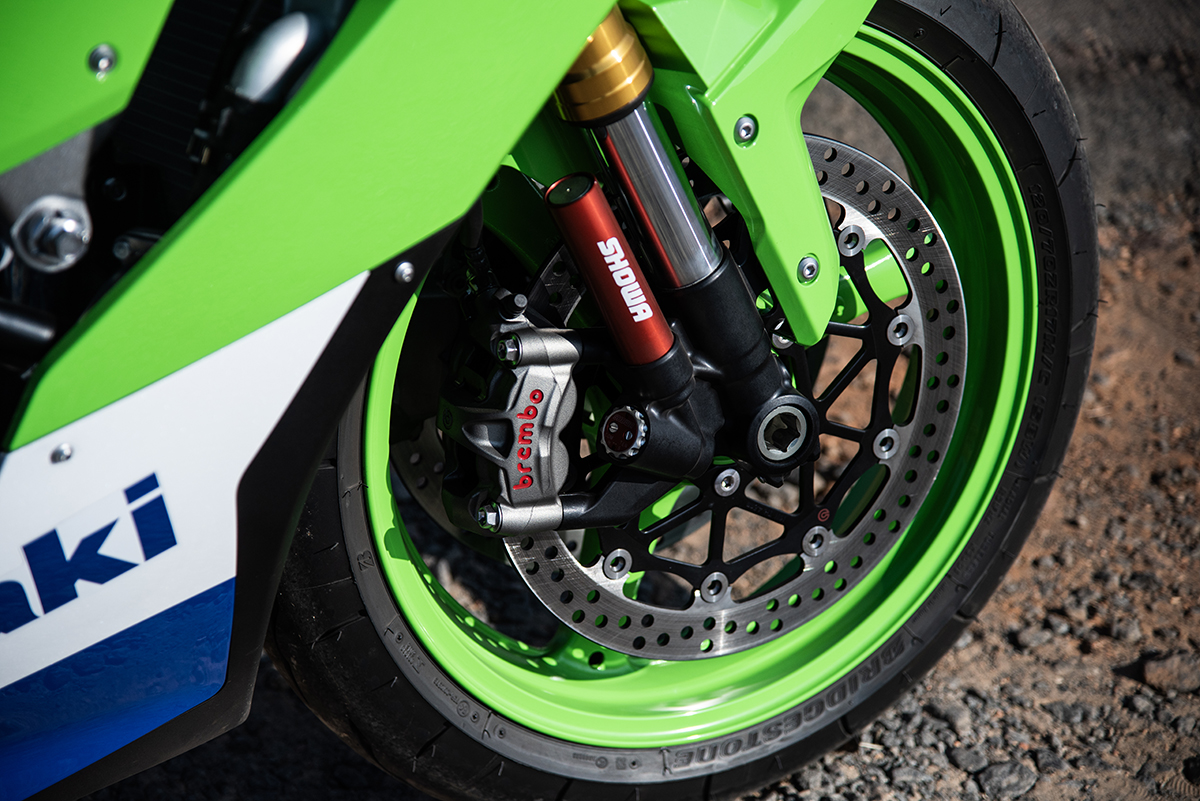
All the motors in the world are worthless if they cannot be harnessed. The inverted 43 mm Showa Balance Free Forks are, as is to be expected fully adjustable for preload, compression and rebound damping. The Horizontal Back-Link rear shock centralizes mass and works superbly. The ride is surprisingly supple for a bike with these performance credentials. The bike is stable at all speeds and both on the gas or braking to stuff it into a corner. It kind of makes you feel inadequate in a “is that the best you can do” kind of way. The alloy chassis, with its monstrous boxed swingarm, is totally up to the task. I would give an organ to have ridden this bike on the ‘22’ back in the ’80s when it was billiard table smooth. Strafing those constant radius sweeps on this weapon would be mind-blowing. If you are brave, or wealthy enough to take to the track with your ZX-10 R, you will enjoy every second. It makes a better rider out of you. it is that good.

Looking deeper into the incredible package that makes up this performance-focused missile we see things like an oil cooler and an electronics package which is really comprehensive. A TFT dash gives you all the info you need. Curiously the fuel gauge shows fuel used in litres as opposed to the conventional gauge. KEBC is Kawasaki Engine Brake Control, allowing you to dial in the amount of engine braking that you want. KLCM is Kawasaki Launch Control Mode, which allows you to get the Kawi off the line controllably. KCMF is Kawasaki Cornering Management Function which manages your transition through a corner via the multi-axis IMU, assisting you to make a smooth transition off and back on the power while cornering. It monitors both throttle and brake input. S-KTRC is a high-performance traction control system which controls wheelspin. An up-and-down quick shifter works well too.
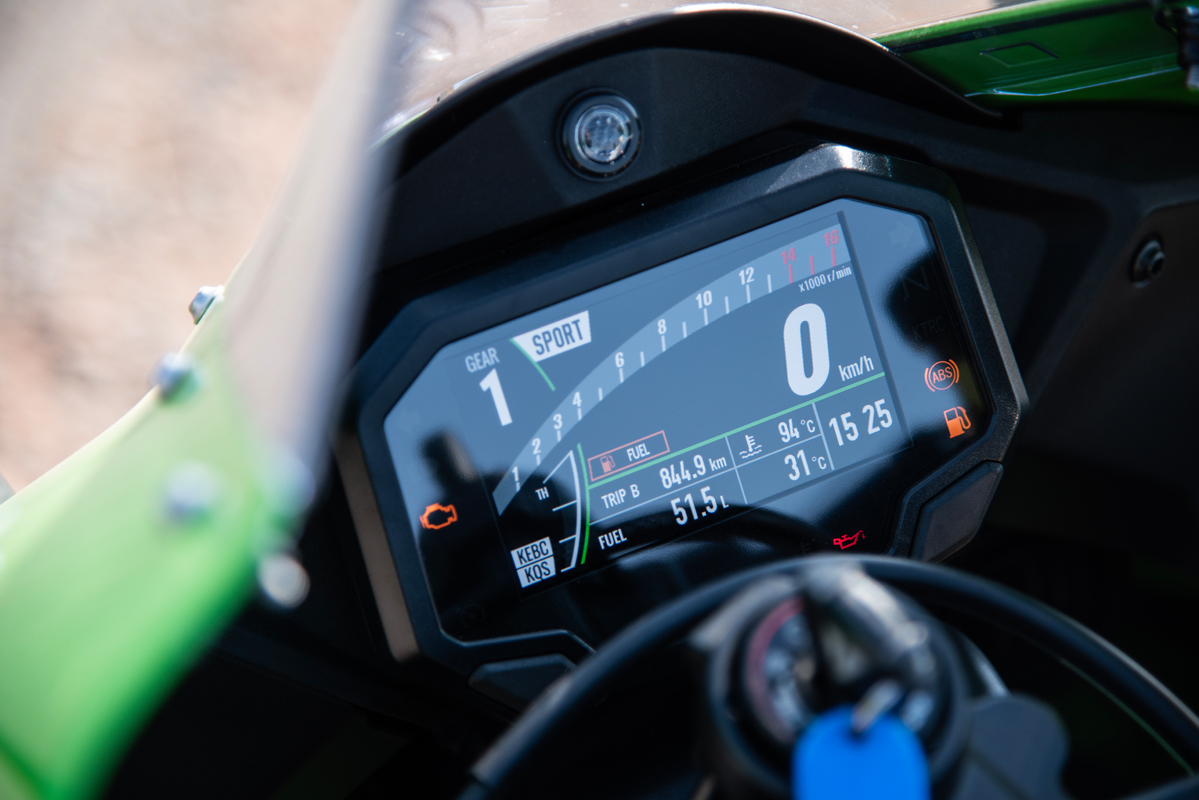
The ZX-10R sports the now almost universal engine modes. Sport, road, rain and rider, where you can choose settings that you fancy. What you have in Kawasaki’s latest ZX-10 R is a state-of-the-art Supersports motorcycle. The limit of this bike, as is the case with most of its peers, is the rider and not the bike. No matter how many electronic aids are built in, there are still 200 wild stallions at your beck and call. This is not a motorcycle for the faint-hearted. On reflection, it is amazing that somehow bikes like this have managed to survive in the increasingly sterile world in which we find ourselves living. If you are well-heeled, buy one, before the bureaucrats have us all whooping around on things with engines that belong in golf carts. Then you will be able to show your grandchildren what REAL men rode before the world lost the plot.
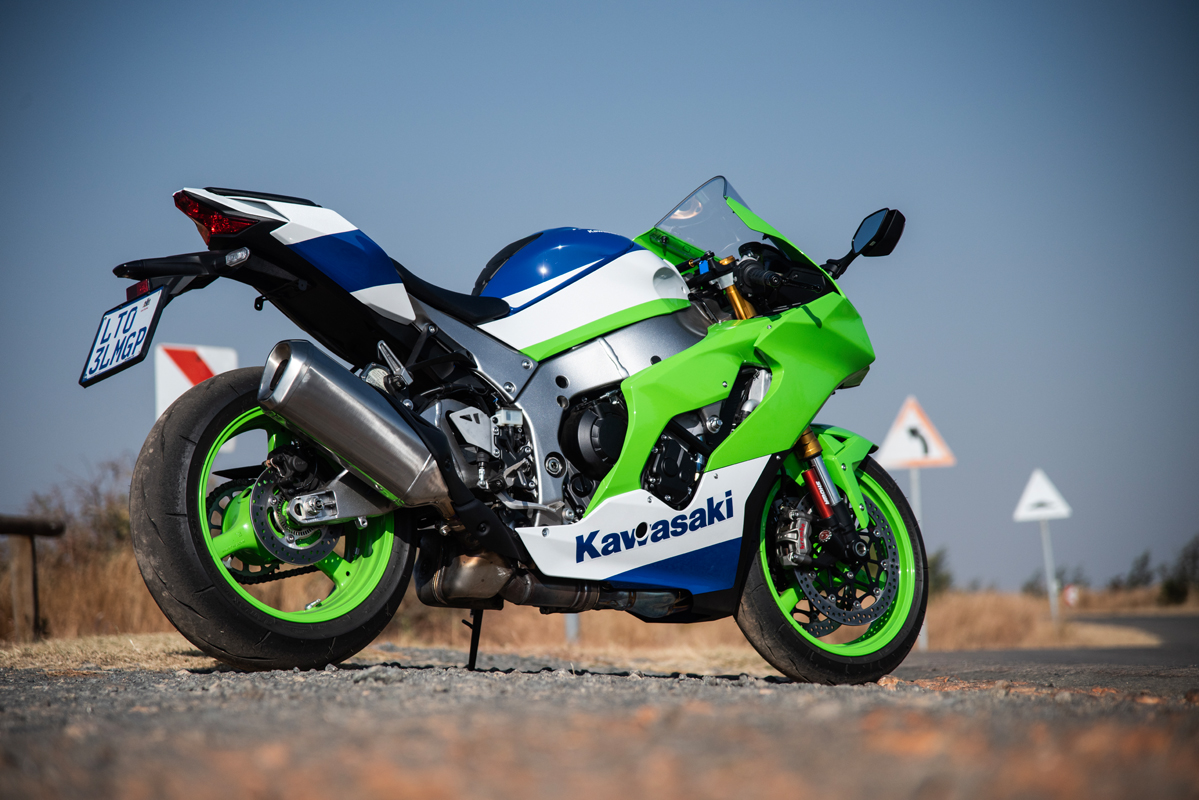
For more info visit: www.kawasaki.co.za




